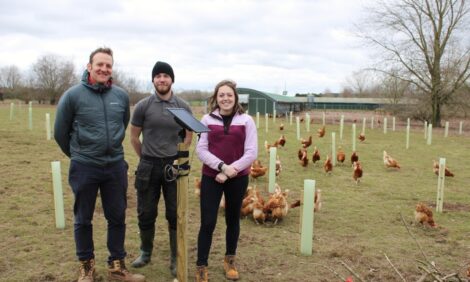



Free Range Poultry Production Rising in Zimbabwe
ZIMBABWE - The growing interest in indigenous foods by many Zimbabweans could be the break that local free-range poultry farmers have been waiting for in a market that has been dominated by hybrids.Over the past five years or so, numerous traditional food eateries have been opened, while hotels have been putting traditional dishes on their menu. This has served to push demand even in supermarkets as some people prefer to cook for themselves at home instead of spending a small fortune on one meal.
Such is the rising popularity for meals that include free-range chicken, guinea fowl, turkey, rabbit and duck meat to go along with traditional starches such as isitshwala samabele (sorghum) and brown rice.
While almost every household in rural areas has always kept free-range chickens for food and a few have sold a bird here and there to help raise money for use around the home, commercial free-range chicken production is a fairly new concept in most areas, according to Chronicle.
This has led to the rise of organisations such as the Zimbabwe Free-range Poultry Producers’ Association that seeks to help farmers take up free-range farming as a way to grow financial and food self-sufficiency in line with tenets of Zim-Asset.
ZFRPPA secretary general Beauty Jiji says free-range poultry farming can empower women and youths to produce enough to feed themselves and the nation thus creating employment as well as food self-sufficiency.
“Free range birds are natural, healthy and tastier than broiler chickens. So while broilers and layers are easier to produce, free-range products can competitively enter the market if given the chance,” she said.
Free-ranging is simple and economically viable when it comes to feeding and Ms Jiji’s organisation has been recruiting and training farmers on rearing free-range birds and other animals such as rabbits, goats and cattle. Farmers have also been taught cheap and easy ways to prepare feed for their birds.
Free range chickens can feed on a normal diet of grass, worms and bugs as they are allowed to freely roam about and access sunshine for long stretches of time each day. Enough time to source their daily protein is a requirement to ensure optimal growth.
There are, however plenty of others foods that free-range birds can feed on, which include small grains such as millet, sorghum and ground maize as well as fish meal, cotton seed, sunflower cake, maize germ and bone meal.
These are foods that farmers can grow and prepare on their own at minimum cost, and therefore, are affordable to rural farmers. Experts say farmers can actually produce enough small grains to feed themselves as well as their chickens thus reducing their food bill while reaping their nutritional benefits.
While most members of ZFRPPA are still producing on a small scale, Ms Jiji says there are some members who now have more than 3000 birds and have sourced markets for their produce.
The problem however has been maintaining a consistent supply once a market is found.
“We have the opportunity to supply the local market. Last year we got a deal to supply a local supermarket but we could not go back because our farmers failed to consistently supply the agreed number of chickens every week,” said Ms Jiji.
She said there is need to change the mindset of women and youths who are practicing free-range farming so that they understand how commercial production works.
“Once we have organised ourselves, we can then start to produce seriously and be able to meet demand consistently,” she added.









